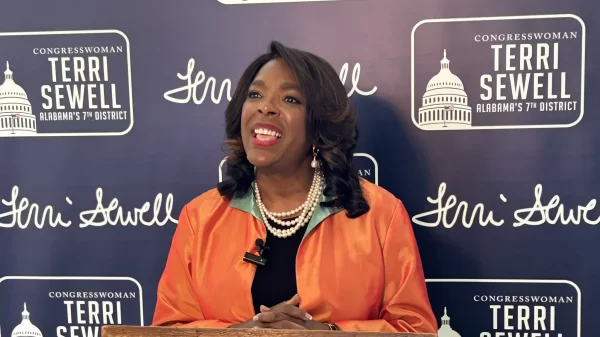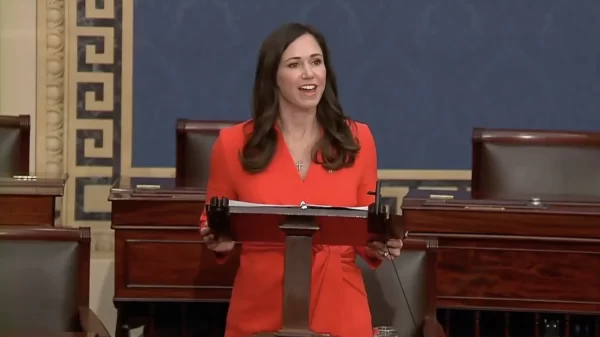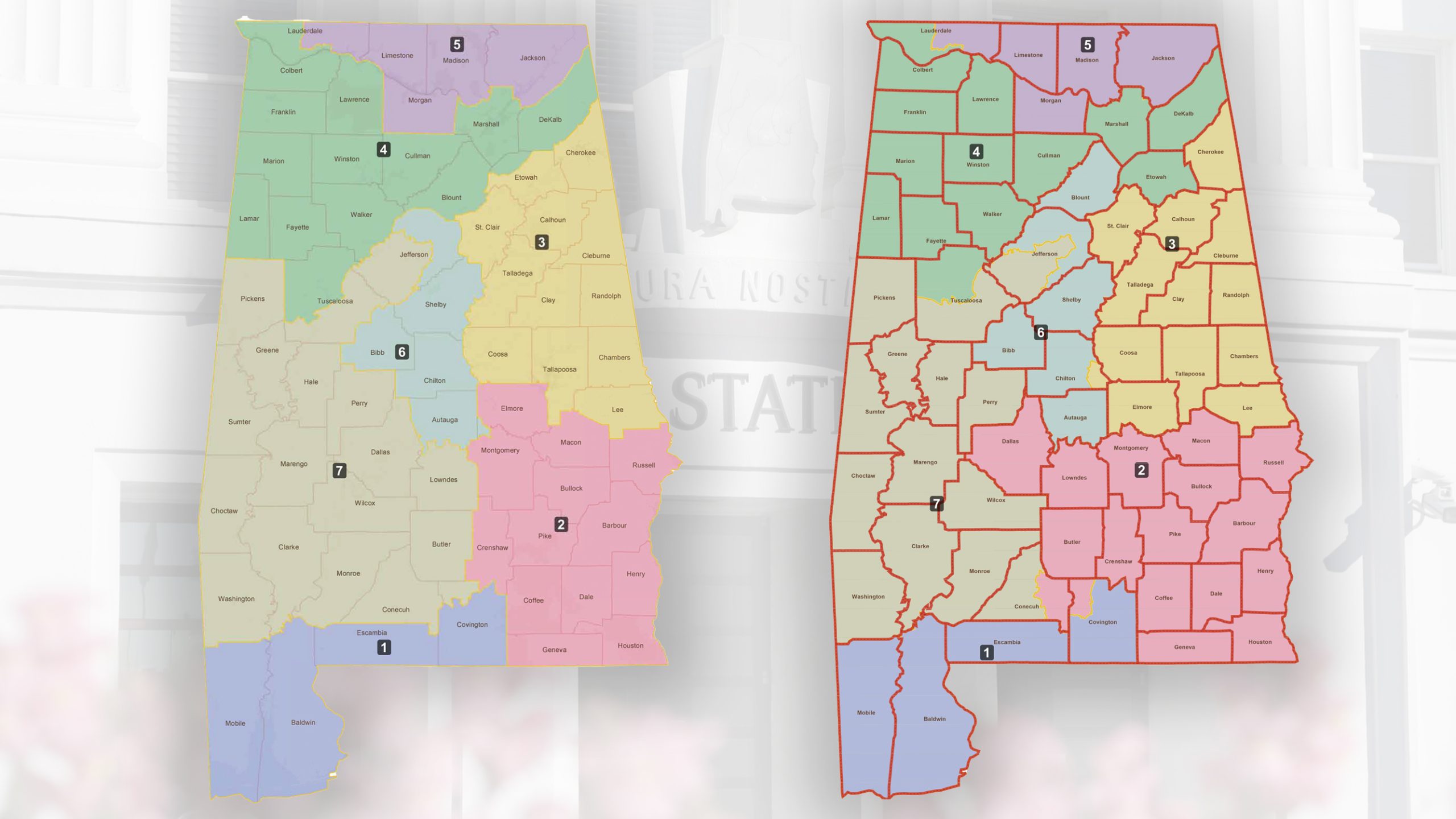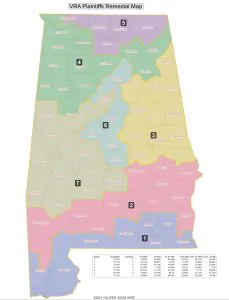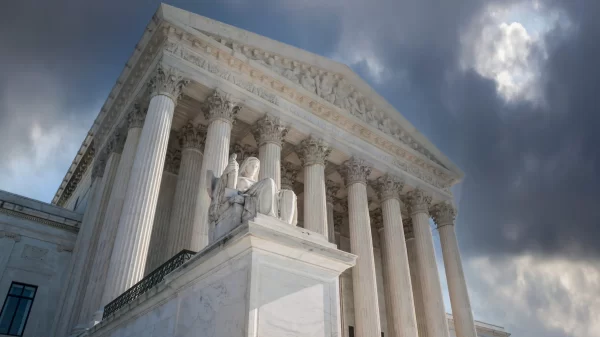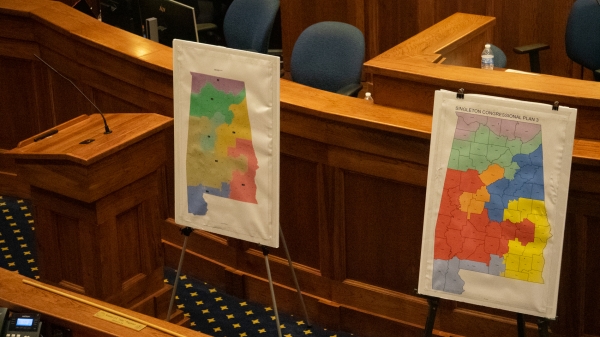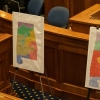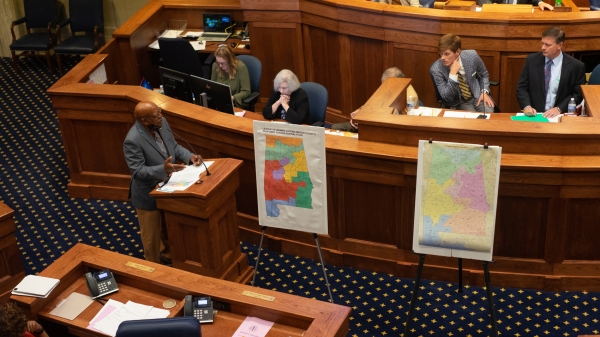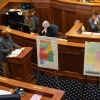|
Getting your Trinity Audio player ready...
|
The Alabama House and Senate passed two different maps on Wednesday, but it might end up that neither becomes the map that gains final passage from the Legislature.
Sen. Dan Livingston, R-Scottsboro, said he expected work would begin on a new map Thursday as a compromise between the Republicans in the separate chambers.
“I don’t think it will be proposed tomorrow, but I think there will be a new map worked on tomorrow I would expect, yes,” Livingston said.
With a Friday deadline imposed by the federal court, a compromise map will have to be introduced as an amendment or substitute in one of the chambers as a new bill can not make it through the legislative process in two days. Alternatively, the map could come out of a conference committee.
Both maps passed Wednesday include only one majority-minority district, actually weakening the Black voting power in Rep. Terri Sewell’s District 7. House Reapportionment Chair Chris Pringle’s plan would bring the Black voting age population (BVAP) in District 2 to 42 percent. The Livingston plan would only bring BVAP to 38 percent.
Democrats have criticized both maps, arguing that neither meets the court’s order to create a second majority-minority district “or something quite close to it.”
During four hours of debate on the map Wednesday, Pringle relied on arguments that have already been rejected by the courts, including an insistence on keeping Mobile and Baldwin counties together as a community of interest.
Rep. Napoleon Bracy, D-Prichard, illustrated that the VRA remedial plan proposed by the plaintiffs in Allen v. Milligan more accurately divides Mobile into separate communities of interest.
Bracy pointed to racial and income disparity within the counties.
“The math ain’t mathin’” Bracy said. “It doesn’t add up when you look at extremely high Black population in these areas and then extremely high White population in these areas and then we say these re communities of interest; they are absolutely not.”
Orange Beach, which is in Baldwin County, is 98 percent white, Bracy said. Meanwhile Prichard in Mobile County is 91 percent Black. There is also a high disparity in household median income. The median household income in Baldwin County is more than $61,000. Mobile County is closer to $41,000 and communities like Prichard are around $30,000.
The VRA remedial plan still keeps the Gulf coast together as a community of interest, but brings the northern part of Mobile county into the Black Belt.
Multiple Democrats talked about the history of families in northern Mobile County that migrated from the more traditional Black Belt.
Democrats have also taken issue with the process.
Pringle continued to argue that his map was not released to the reapportionment committee until Friday because he had to take public input into consideration. Democrats have scoffed at the idea that the map could not have been put out for public scrutiny and revised, and have also questioned whether any public input meaningfully shaped the map.
Redistricting experts have also been critical of the state’s answer to the court order.
“The maps passed by the Alabama House and Senate are in flagrant disregard of the Alabama district court’s order to enact a map with two districts in which Black Alabamians can elect a candidate of their choice, and the Supreme Court’s decision affirming the lower court,” said Marina Jenkins, Executive Director of the National Redistricting Foundation. “This shameful process, riddled with partisan schemes deployed at the expense of Black voters’ rights, has failed the voters of Alabama who deserve a fair and compliant congressional map. Time and time again, Republican legislators have shown their intentions lie solely in maintaining their own political power and silencing the constituents they are meant to represent. Neither the House nor Senate map meet the requirement of the court’s order, or the law, and will be challenged.”





















